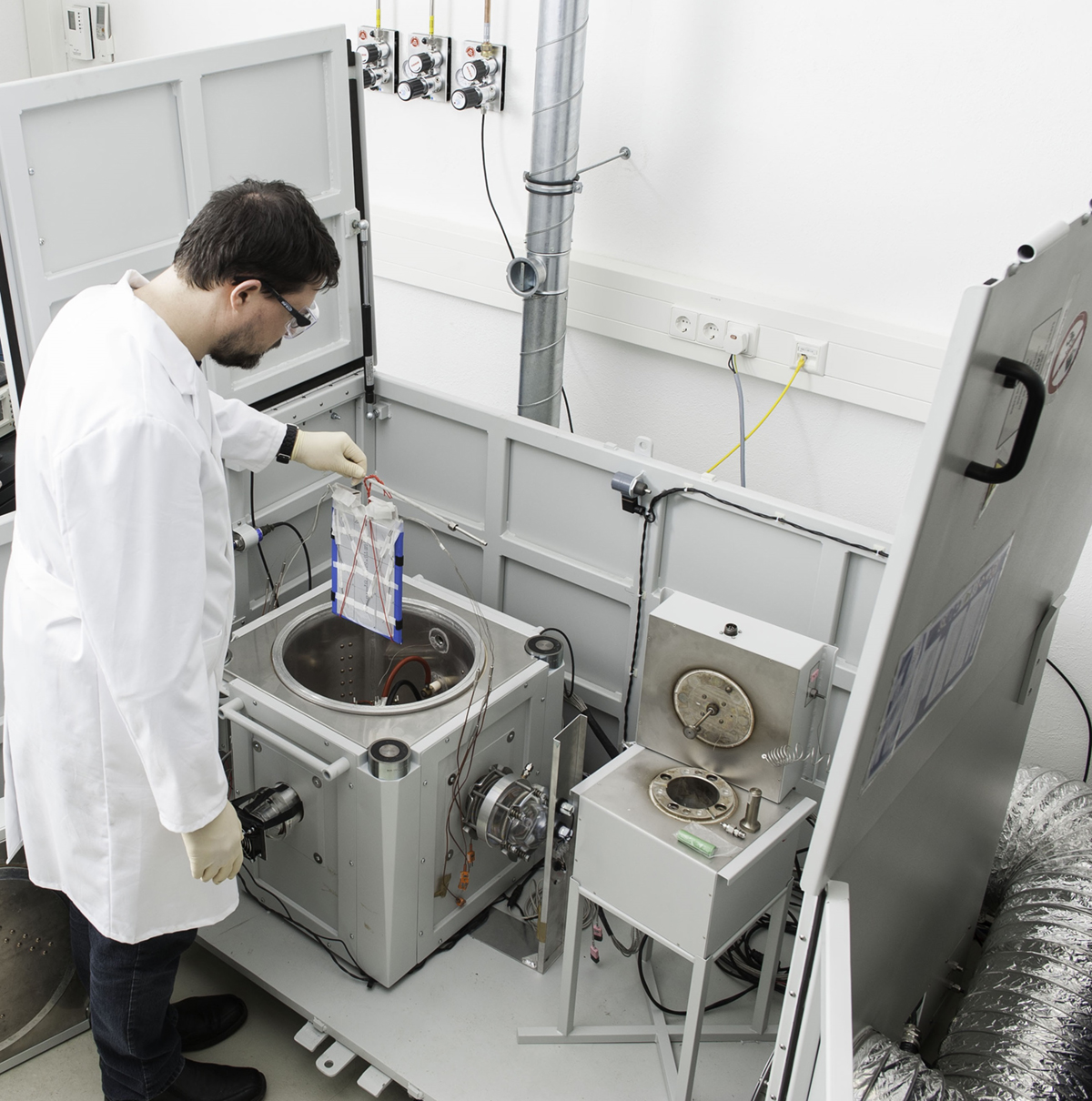Here, Dr Carlos Ziebert, Karlsruhe Institute of Technology, discusses progress in battery research through safety and ageing studies using calorimeters
Dr Carlos Ziebert, head of IAM-AWP’s Calorimeter Center, KIT, explains how calorimeters can help in battery research.

The development of safe cells is of outmost importance for a breakthrough of the electrification of transport and for stationary storage, because the thermal runaway can cause an ignition or even explosion of the cell with simultaneous release of toxic gases. In the last nine years, we have established battery calorimetry at the IAM-AWP Calorimeter Center as a powerful and versatile electrochemical-thermal characterisation technique, which allows both advancements for the thermal management and the safety of batteries.
This center operates Europe’s largest battery calorimeter laboratory and provides six Accelerating Rate Calorimeters (ARCs) of different sizes – from coin to large pouch or prismatic automotive format (Fig.1) – which allow the evaluation of thermodynamic, thermal and safety data for Lithium-ion cells on material, cell and pack level under quasiadiabatic and isoperibolic environments for both normal and abuse conditions (thermal, electrical, mechanical).
Safety studies
New methods for the measurement of external and internal cell pressures for early prediction of thermal runaway of LIB have recently been established on 18650 cells. The external pressure was measured utilising a gas-tight cylinder inside the calorimeter chamber, in order to detect the venting of the cells, as can be seen in the blue curve in Fig. 2. For internal pressure measurements, first an X-Ray tomography image was recorded to find a suitable place. Then a pressure line connected to a pressure transducer was directly inserted into the cell and the pressure was recorded during a thermal abuse test, as can be seen in Fig.2 in the curve coloured in magenta. This plot clearly shows that the cell goes into thermal runaway even if the safety vent opens at a pressure of around 12 bar and releases gases leading to a pressure drop. Thus, the measurement of the internal pressure could be used for the early prediction of processes leading to thermal runaway. This method has been adapted from cylindrical cells to pouch cells and prismatic automotive cells.

Ageing studies
For ageing studies, the cell is inserted into the calorimeter chamber, which has heaters and thermocouples located in lid, bottom and side wall. These adjust either isoperibolic or quasiadiabatic ambient conditions.
Isoperibolic means, that the temperature of the calorimeter chamber is kept constant and the temperature change at the surface of the cell is measured. In the quasiadiabatic mode the heaters in the calorimeter chamber follow immediately any change of the cell temperature preventing the heat transfer to the chamber. Using these two conditions an ageing study was carried out. First, fresh cells were stored at different temperatures in temperature chambers and then characterised at fixed time intervals in order to investigate the influence of this storage (calendar aging) on cell performance. Secondly, cells were aged at a constant charging/ discharging rate in temperature chambers (cyclic aging).
Figure 3 compares the temperature curves measured in the ARC between the cells in new condition and after cyclic (G1) or calendaric (G2, G3) aging under isoperibolic conditions (Figure 3a)) or adiabatic conditions (Figure 3b)). Under both conditions, cyclic aging leads to the largest changes, which manifests under isoperibolic conditions as an increase in the maximum temperature by 4 °C and under adiabatic conditions by earlier reaching the maximum permitted operating temperature of 60 °C. Calendar aging also leads to the same effects, however, regardless of the storage temperature, the increase in the maximum temperature is only 1.5 ° C. In addition, cyclic ageing also changes the curve shape, which is a further indicator for the ageing status or history. Thus, recording of the temperature profile can be used as a “fingerprint” for the state-of-health (SOH) and as fast and reliable method for the characterisation of ageing processes. Moreover, the influence of ageing and operating conditions on cell safety can be addressed in the ARCs. This means that the change in the hazard potential of the cells with increasing degree of ageing can be quantitatively determined.

Currently Battery calorimetry is also needed to assess thermal and safety properties of post-Lithium materials such as sodium or magnesium to ensure safe upscaling. To summarize, battery calorimetry is now well established and is increasingly becoming more requested by our European research partners from both industry and academia, because quantitative and system relevant data for temperature, heat and pressure development of materials and cells are provided as a fast feedback for the cell developers and as input data for modeling and simulation. There are still numerous challenges to address and we hope that our Calorimeter Center will help the European industry to make further progress in the battery field, which is urgently needed to reach a low-carbon future, to foster European leadership, and to create new jobs, which are the main objectives of the European Battery Alliance.
Please note: This is a commercial profile











